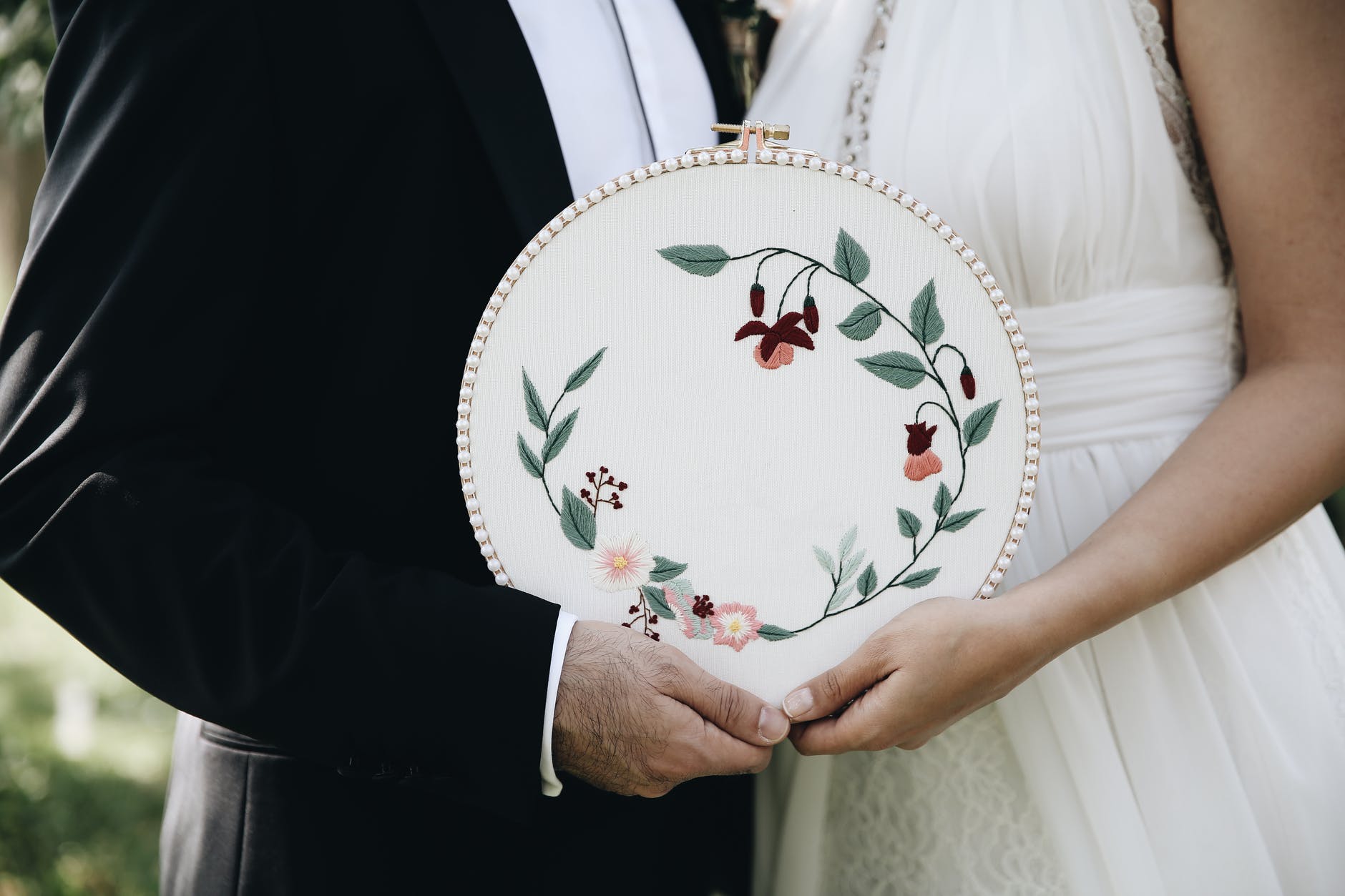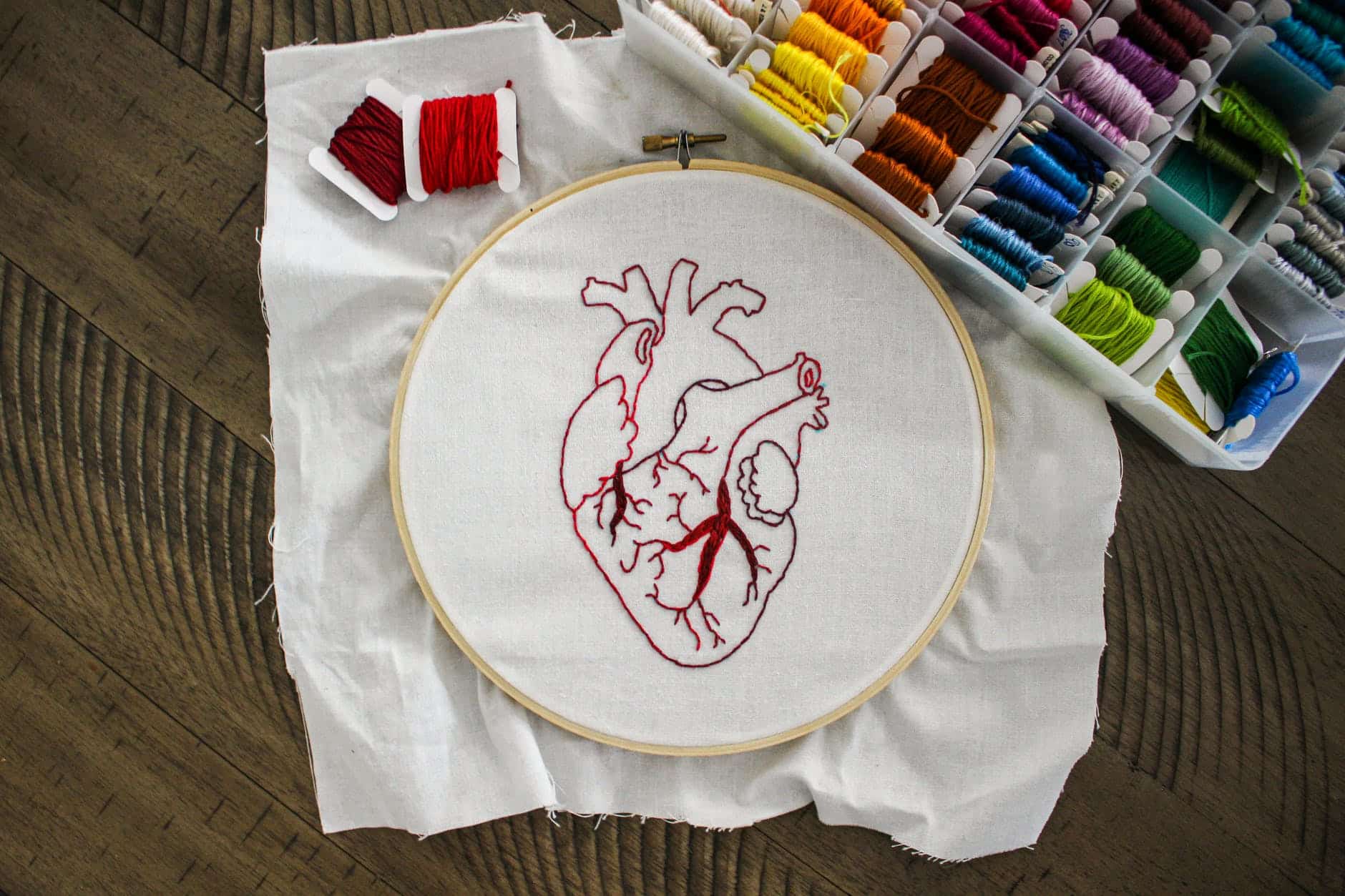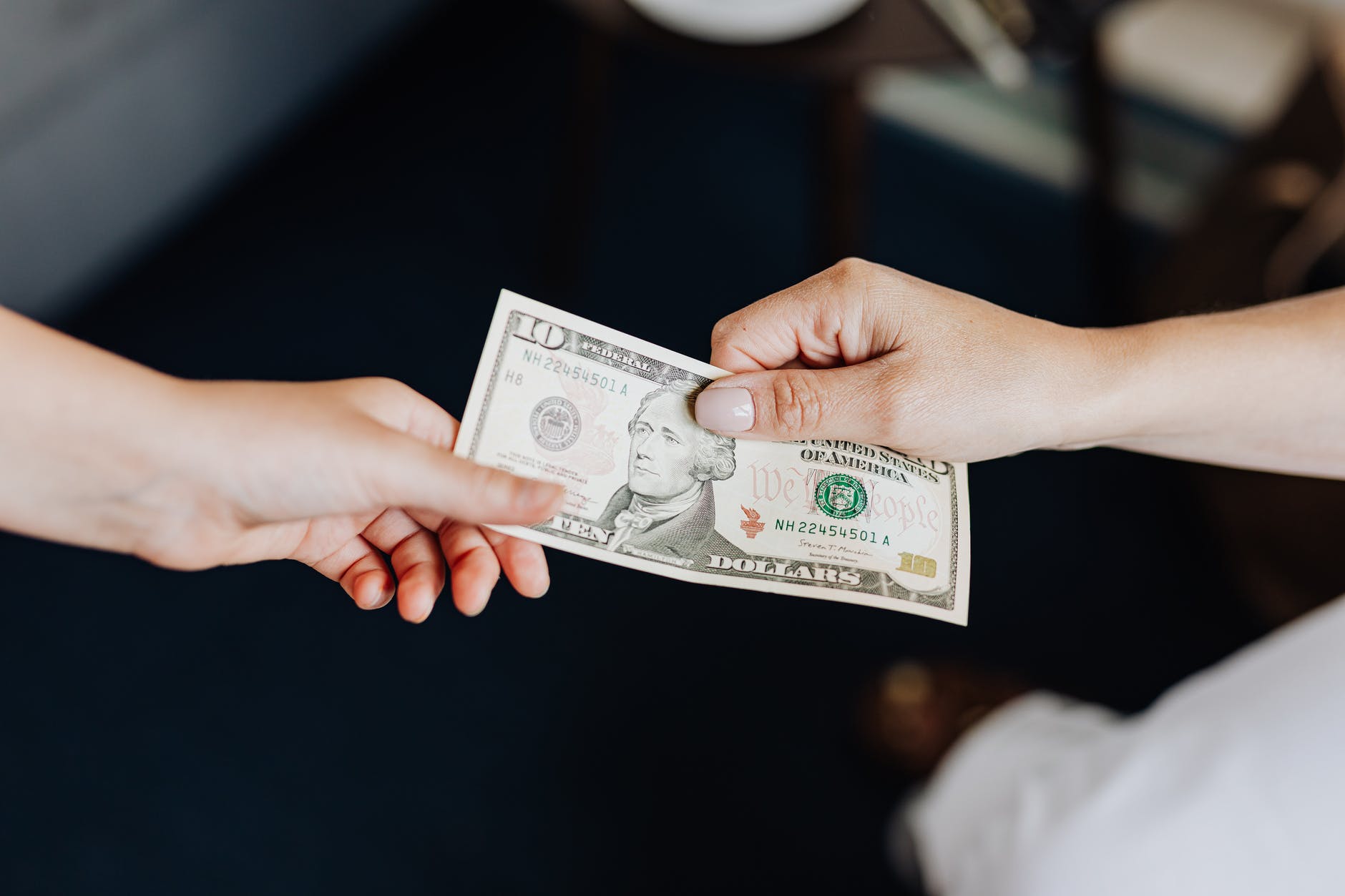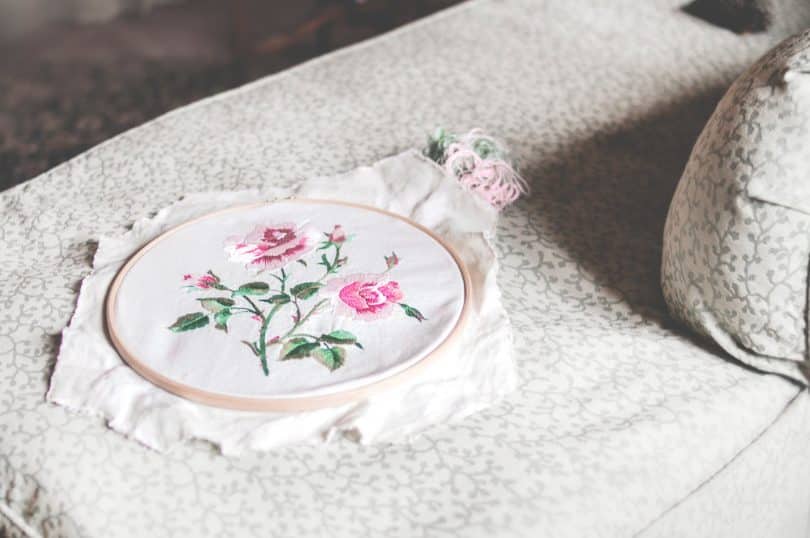Embroidery is a great hobby to take up, but it can be hard to know where to start. Most people think that embroidery is too difficult or time-consuming to do at home. They also don’t understand the basics of this art form, considering it too tough to learn. But that’s not true! Anyone can learn embroidery, and it’s a great way to relax and de-stress after a long day.
If you also see embroidery as a hobby that’s only for the experts, you have clicked the right link. This guide will show you how to get started with embroidery, choose the best embroidery materials, and master the basics of stitches. We’ll also share some basic embroidery tips to help you get started on your masterpiece right away and tricks to make your embroidery projects look their best.
So, if you want to enter the world of colorful threads, beautiful patterns, and cute hand-crafted goods, read on while we walk you through different steps of embroidery!

How to Learn Embroidery
As a synopsis of this article, there is no one-size-fits-all answer to this question, as the best way to learn embroidery will vary depending on your level of experience and interest. However, there are a few general tips that can help you get started:
- The first step is to find some basic instructions on how to embroider. You can find these online or in books and magazines dedicated to the craft.
- Once you have a basic understanding of the process, it’s time to start practicing. Grab some fabric and a needle and start stitching.
- As you become more comfortable with embroidery, you can experiment with different stitches, patterns, and colors. There are no rules, so have fun and be creative.
- Finally, don’t forget to show off your finished projects! Embroidery is a great way to add personalization and flair to any item.
Steps to Starting Embroidery as a Beginner
You might find tons of embroidery tips at one click, but if you’re unaware of what is embroidery used for and its basics, taking it up as a long-term hobby will be difficult. But fret not because some easy embroidery tips are coming right your way.
Understand Different Stitches and Patterns First
The first thing you need to do before starting embroidery is to understand the basic stitches and patterns. This will help you choose the right design for your project. You can find many stitch tutorials and pattern books at your local craft store. If you want to understand what is embroidery used for and different stitch styles, a will suit you the best. You can learn different patterns, designs, and embroidery purposes from this guide and start this hobby after fathoming the entire concept.

Gather the Essentials
The next step to starting embroidery is to gather all of the supplies that you will need. The type of fabrics, threads, and needles you use will largely depend on the project you are working on. For example, if you are working on a delicate project like lace, you will need to use a different needle and thread than you would for a thicker fabric like denim.
Here’s what you’ll need to put all embroidery tips to the test:
- Fabric
- Embroidery floss or plain thread
- Needle
- Scissors
- Embroidery patterns
After studying your embroidery guide, you’ll know what is embroidery used for and have a few easy tips to implement the knowledge. Now, it’s time to start working!
Choose the Right Fabric
The next step is to choose the suitable fabric for your project. The type of fabric you use will depend on the design you select. Some materials are better suited for certain stitches and patterns than others. is always good for beginners because it helps you better understand stitch patterns and knots.
Choose a Suitable Thread
After choosing embroidery fabric, it’s time to select the thread. Again, the type of thread you use will be determined by the design you’re embroidering. But generally, embroidery floss is good for most projects. If you intend to learn embroidery and use this skill in the long run, get a big and tools in one go. This collection will allow you to experiment with different embroidery styles and forms.
Choose a Simple Design
Once you have all of your supplies, you must choose a design. For beginners, it is best to choose a simple design with not too many colors. This will help you to get the hang of embroidery before moving on to more complex designs.
Transfer the Design onto the Fabric
After choosing your design, you will need to transfer it onto the fabric. You can do this by using an embroidery transfer pen or tracing the design onto the fabric with a water-soluble marker.
Thread the Needle
Next, you will need to thread the needle with embroidery floss. To do this, you will need to cut a length of floss about 18 inches long. Once the floss is cut, separate it into two strands and then thread it through the needle.
Tie a Knot
After the needle is threaded, you will need to tie a knot at the end of the floss. This will prevent the floss from slipping through the fabric.
Start Stitching
Now you are ready to start stitching! To begin, insert the needle into the fabric from the backside. Then, pull the needle through to the front side, leaving a small loop of floss on the backside.
To make a stitch, insert the needle into the fabric at the point where you want the stitch to end. Then, pull the needle through to the backside of the fabric. Be sure to leave a small loop of floss on the front side of the fabric.
To complete the stitch, insert the needle into the loop of floss on the backside of the fabric. Then, pull the needle through and gently tighten. Repeat this process until your design is complete!

Flaunt your Embroidery Skills and Make Money
Embroidery is quite a unique skill in this era, especially when we talk about hand-embroidered goods and clothes. So, once you master this art, you must monetize it by selling your hand-embroidered items. There are a few options for selling embroidered handcrafted items. One option is to sell online through sites such as Etsy or eBay. Another option is to sell at local craft shows or fairs. Finally, you could also sell through your own website or blog. Whichever method you choose, be sure to promote your items well in order to attract buyers.
If you’re selling online, Etsy is an excellent option as it’s a well-known site for handmade and vintage items. Be sure to take clear, professional photos of your items and write detailed descriptions. You’ll also need to set up shipping options and prices. Local craft shows and fairs are another great option for selling your embroidered items. This gives potential buyers the chance to see your items in person and ask any questions they may have. it’s better to have a display that shows off your items well – don’t forget to bring plenty of business cards!
Takeaway
If you’re looking for a productive and unique hobby, embroidery can be it. The best thing about embroidery is its engaging nature and diversity. You can start as someone who doesn’t know what is embroidery used for and become pretty good at it within weeks. All it takes is persistence and some good embroidery tips to take up this hobby. This guide was meant to give you an idea of this skill; there’s a lot more to embroidery you’ll explore along the way. Get a good , follow the embroidery tips you read in the guide, and you’re good to go.
If you’re interested in more handcrafts like this, check out the best knitting kits for newbies!







